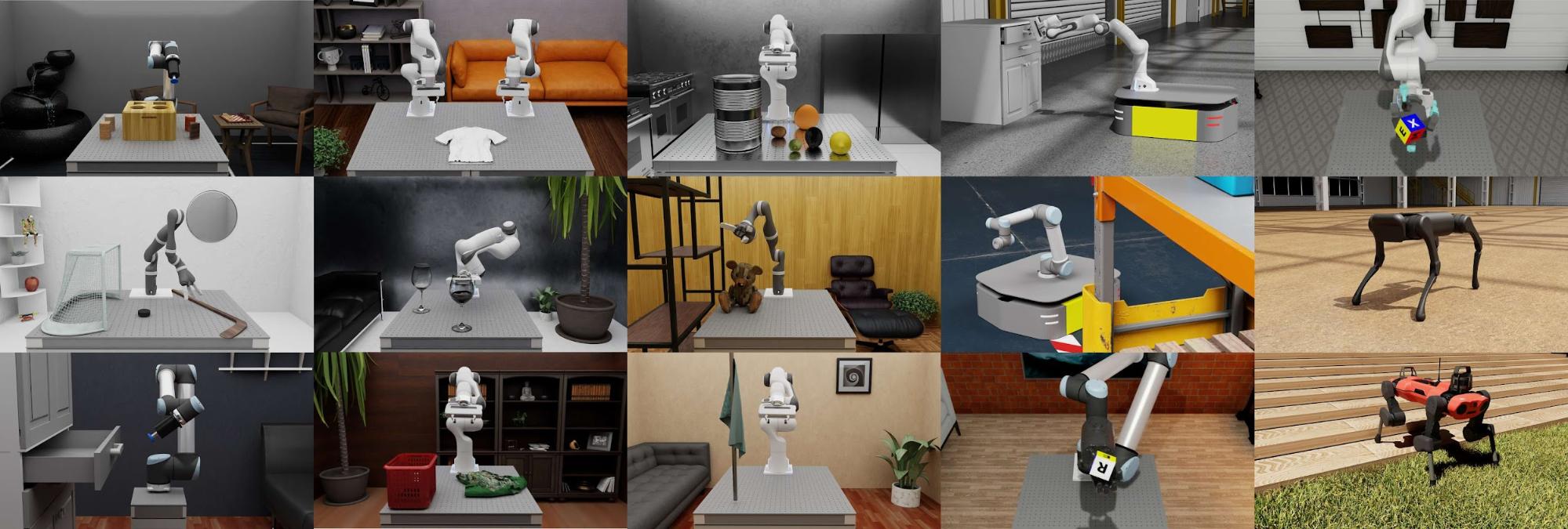Available Environments#

Isaac Lab also includes over 26 pre-built environments and tasks that you can leverage in your simulations. The categories include:
Dexterous manipulation, which includes a variety of tasks such as manipulating deformable objects, solving Rubik’s cubes and opening cabinets.
Legged locomotion, focusing on moving quadrupeds or humanoids across different terrains.
Multi-agent reinforcement learning, for example, two robotic arms attempting to pass a ball to each other. While challenging, this opens up exciting research possibilities.
Navigation. which differs from locomotion because it involves moving to a specific position in space, while locomotion is about following directional commands.
Tiled rendering, or visual-based RL, allows us to incorporate visual data into the observation set used for reinforcement learning. It’s a complex process that goes beyond conventional reinforcement learning, which typically relies on physics-based state observations. We can now simulate over 1000 cameras simultaneously, a substantial leap forward in capability. We’ll discuss this more in the next lesson.
Teleoperation and imitation learning, where users can generate training data using their mouse or keyboard, multiply the data using GR00T-Mimic then train the robot using the RoboMimic suite that ships with Isaac Lab.
Isaac Lab also comes bundled with several reinforcement learning algorithms, including RL-Games, RSL-RL, and Stablebaselines. For more detailed information on these algorithms and environments, refer to the documentation.
Tip
Learn More: Available Environments in Isaac Lab Documentation